
 | Home | ||
Gateway of india |
|
 Gateway of india ,One of the most prized chattels of the country, the Gateway of India is situated on the waterfront in South Mumbai. Anyone coming to Mumbai from this harbor is greeted by the huge monument, which stands as a authentication to the imperial bygone era of the city. As you pass through the gate from the city side, the first scene that looms into view is that of the waterfront of South Mumbai. A popular harbor, it is used by a large number of people for traveling to the other parts of Bombay, especially the Elephanta Island. The architecture of the Gateway of India comprises of a huge arch, which is approximately 26 m in height. The entire organization has been made by using yellow basalt and armored concrete. It has mainly been constructed as per the Indo-Saracen style of architecture. One can also find the features of the Muslim architectural styles that were very much popular in Gujarat in the 16th century. The top of the monument stands adorned with a central dome, which has a diameter of 15 m. Gateway of india ,One of the most prized chattels of the country, the Gateway of India is situated on the waterfront in South Mumbai. Anyone coming to Mumbai from this harbor is greeted by the huge monument, which stands as a authentication to the imperial bygone era of the city. As you pass through the gate from the city side, the first scene that looms into view is that of the waterfront of South Mumbai. A popular harbor, it is used by a large number of people for traveling to the other parts of Bombay, especially the Elephanta Island. The architecture of the Gateway of India comprises of a huge arch, which is approximately 26 m in height. The entire organization has been made by using yellow basalt and armored concrete. It has mainly been constructed as per the Indo-Saracen style of architecture. One can also find the features of the Muslim architectural styles that were very much popular in Gujarat in the 16th century. The top of the monument stands adorned with a central dome, which has a diameter of 15 m. |
|
| History : The main idea behind the assembly of the Gateway of India was to celebrate the visit of King George V and Queen Mary to Bombay. Sir George Sydenham Clarke, the then Governor of Bombay, laid down the foundation stone of the monument in March 1911. However, his plan was approved in 1914 and the reclamations at Apollo Bundar got completed in 1919. Designed by George Wittet, an architect, Gateway of India took approximately 4 years (1920 to 1924) to get fully accomplished. | |
Marine Drive |
Top^ |
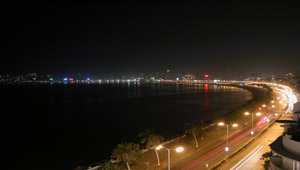 Marine Drive Mumbai is a perfect place for enjoyment and lessening. This 'C' shaped area is 3 km long and is located in Mumbai south. Marine Drive adjoining to the Arabian sea comprises 6 lanes running along the sea coast. The Marine drive is a naturally formed bay on the Arabian sea. At the northern end of Mumbai Marine drive lies the famous Chowpatty Beach where a wide array of snacks and tasty food is available to the strolling visitors. The Promenade also known by the name of Netaji Subhash Chandra Bose Road, is a major attraction of Marine drive Mumbai. The Promenade is lined with beautiful palm trees that enhance the beauty of the place. The visitors can enjoy the breathtaking views of the setting sun at twilight.
Babulnath and Malabar Hill are connected to the Nariman Point by the Marine drive. As the place offers a wide panoramic view of the sea and the mountains the title of queen's necklace was conferred to Mumbai's marine drive as it offers a wide panoramic view of the sea and the mountains. At the same time it is one of the busiest roads in Mumbai that is lined with scintillating street lamps. The popular hotels and restaurants lie in its environs. The governor's house, art deco building and the real estates are all popular houses on the Marine drive. Marine Drive Mumbai is a perfect place for enjoyment and lessening. This 'C' shaped area is 3 km long and is located in Mumbai south. Marine Drive adjoining to the Arabian sea comprises 6 lanes running along the sea coast. The Marine drive is a naturally formed bay on the Arabian sea. At the northern end of Mumbai Marine drive lies the famous Chowpatty Beach where a wide array of snacks and tasty food is available to the strolling visitors. The Promenade also known by the name of Netaji Subhash Chandra Bose Road, is a major attraction of Marine drive Mumbai. The Promenade is lined with beautiful palm trees that enhance the beauty of the place. The visitors can enjoy the breathtaking views of the setting sun at twilight.
Babulnath and Malabar Hill are connected to the Nariman Point by the Marine drive. As the place offers a wide panoramic view of the sea and the mountains the title of queen's necklace was conferred to Mumbai's marine drive as it offers a wide panoramic view of the sea and the mountains. At the same time it is one of the busiest roads in Mumbai that is lined with scintillating street lamps. The popular hotels and restaurants lie in its environs. The governor's house, art deco building and the real estates are all popular houses on the Marine drive. |
|
Crawford Market |
Top^ |
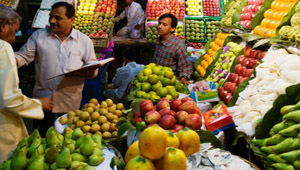 Crawford Market is situated to the north of the Chhatrapati Shivaji Terminus of Mumbai. It lies just contrary the headquarters of Mumbai Police. Authoritatively known as Mahatma Jyotirao Phule Market, Crawford Market is counted in the midst of the popular shopping areas of the city. Crawford Market has been built as per the Norman and Gothic style of architecture. At a height of 50 feet above its ground is a porthole awning, which brings sunlight into the market. Crawford Market is situated to the north of the Chhatrapati Shivaji Terminus of Mumbai. It lies just contrary the headquarters of Mumbai Police. Authoritatively known as Mahatma Jyotirao Phule Market, Crawford Market is counted in the midst of the popular shopping areas of the city. Crawford Market has been built as per the Norman and Gothic style of architecture. At a height of 50 feet above its ground is a porthole awning, which brings sunlight into the market.The exteriors of Crawford Market stand festooned with wall paintings, which depict the images of Indian farmers in wheat fields. On the inside, one finds the stone fountains designed by Lockwood Kipling, father of the acclaimed novelist - Rudyard Kipling. Spread over an area of approximately 22,471 sq m (24,000 sq ft), Crawford Market has been constructed out of coarse buff-colored Kurla stone and red-stone from Bassein. Nestled involving the British fort and the local town, this market is the perfect place to buy food items. |
|
Victoria Terminus (Shivaji Terminus) |
Top^ |
 Victoria Terminus was opened on January 1st, 1882 as the main railway station of Mumbai. Designed by F.W. Stevens, this Gothic building facial appearance carvings of peacocks, gargoyles, monkeys, and lions. Domes, turrets, spires and stained glass windows are other architectural items of note. The technique of the Victoria Terminus is more like a house of worship than a railway station. The Chhatrapati Shivaji Terminus formerly known as Victoria Terminus was built in 1888. An example of Victorian Gothic revival architecture in India, Victoria Terminus was named after the then Queen Empress on Jubilee Day, 1887. Victoria Terminus is the western-most end point of the central railways of India and also the southern end point of the innermost and harbor lines of Mumbai's urban rail transport system. The Victoria Terminus was renamed Chhatrapati Sivaji Terminus on March 4, 1996. It was put on the UNESCO World Heritage List on July 2, 2004. Victoria Terminus was opened on January 1st, 1882 as the main railway station of Mumbai. Designed by F.W. Stevens, this Gothic building facial appearance carvings of peacocks, gargoyles, monkeys, and lions. Domes, turrets, spires and stained glass windows are other architectural items of note. The technique of the Victoria Terminus is more like a house of worship than a railway station. The Chhatrapati Shivaji Terminus formerly known as Victoria Terminus was built in 1888. An example of Victorian Gothic revival architecture in India, Victoria Terminus was named after the then Queen Empress on Jubilee Day, 1887. Victoria Terminus is the western-most end point of the central railways of India and also the southern end point of the innermost and harbor lines of Mumbai's urban rail transport system. The Victoria Terminus was renamed Chhatrapati Sivaji Terminus on March 4, 1996. It was put on the UNESCO World Heritage List on July 2, 2004. |
|
Chowpatty beach |
Top^ |
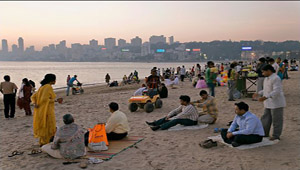 Chowpatty is Mumbai's most famous beach. During the day, it is the hangout of the happily unemployed who snooze under the shade of its miniature trees. But in the evening the atmosphere is more like a carnival: kids screaming on Ferris wheels or taking pony rides, wayside astrologers making a quick buck, monkey shows, and even the odd self -styled gymnast who will demonstrate amazing yogic postures for a small fee. At one closing stages is a row of bhelpuri shops hawking Mumbai's most popular snack: crisp puffed rice and semolina doused in pungent chutneys, all scooped up with a flat, fried puri. You might even catch a film shoot or a street play. In short, for most tourists Chowpatty is where the action is. Chowpatty is Mumbai's most famous beach. During the day, it is the hangout of the happily unemployed who snooze under the shade of its miniature trees. But in the evening the atmosphere is more like a carnival: kids screaming on Ferris wheels or taking pony rides, wayside astrologers making a quick buck, monkey shows, and even the odd self -styled gymnast who will demonstrate amazing yogic postures for a small fee. At one closing stages is a row of bhelpuri shops hawking Mumbai's most popular snack: crisp puffed rice and semolina doused in pungent chutneys, all scooped up with a flat, fried puri. You might even catch a film shoot or a street play. In short, for most tourists Chowpatty is where the action is. |
|
Flora Fountain |
Top^ |
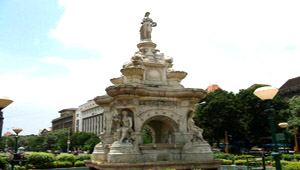 Motivated from Flora the Roman Goddess of Flowers, Flora Fountain is a stone fountain in South Mumbai. Located in the Fort business district, the marvelous fountain was built in 1864. It was constructed by the Agri-Horticultural society of Western India and was carefully designed by R. Norman Shaw. Crafted out of imported Portland stone, Flora Fountain was erected at a total sum of Rs. 47,000.
Today, this glorious fountain has been coated with white oil paint. Initially, it was intended to be named after Sir Bartle Frère, who was the governor of Bombay at the time of its construction. Nonetheless, it was decided to change the name just before to its investiture. Situated almost in the center of South Mumbai, Flora Fountain is sited just at the place where stood the original Churchgate of Bombay Fort.
In 1960, the square where the fountain stands, was formally christened as Hutatma Chowk or Martyr's Square. Flora Fountain has been declared as a heritage structure that continues to soothe the passers-by with its spew of water. Encircled by imperial colonial buildings, the fountain still depicts the royal times. In short and snappy terms, Flora Fountain is city's famous signpost that definitely deserves a visit. Motivated from Flora the Roman Goddess of Flowers, Flora Fountain is a stone fountain in South Mumbai. Located in the Fort business district, the marvelous fountain was built in 1864. It was constructed by the Agri-Horticultural society of Western India and was carefully designed by R. Norman Shaw. Crafted out of imported Portland stone, Flora Fountain was erected at a total sum of Rs. 47,000.
Today, this glorious fountain has been coated with white oil paint. Initially, it was intended to be named after Sir Bartle Frère, who was the governor of Bombay at the time of its construction. Nonetheless, it was decided to change the name just before to its investiture. Situated almost in the center of South Mumbai, Flora Fountain is sited just at the place where stood the original Churchgate of Bombay Fort.
In 1960, the square where the fountain stands, was formally christened as Hutatma Chowk or Martyr's Square. Flora Fountain has been declared as a heritage structure that continues to soothe the passers-by with its spew of water. Encircled by imperial colonial buildings, the fountain still depicts the royal times. In short and snappy terms, Flora Fountain is city's famous signpost that definitely deserves a visit. |
|
Dhobi Ghat |
Top^ |
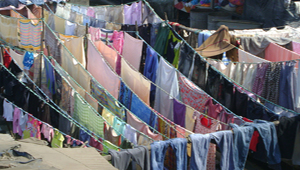 Dhobi Ghat A unique feature of Mumbai, the dhobi is a traditional laundryman, who will collect your dirty linen, wash it, and return it neatly pressed to your doorstep. All for a pittance. The "laundries" are called "ghats": row upon row of concrete wash pens, each fitted with its own flogging stone. The clothes are soaked in sudsy water, thrashed on the flogging stones, then tossed into huge vats of boiling starch and hung out to dry. Next they are ironed and piled into neat bundles. The most famous of these Dhobi Ghats is at Saat Rasta near Mahalaxmi Station where almost two hundred dhobis and their families work together in what has always been a hereditary occupation. Dhobi Ghat A unique feature of Mumbai, the dhobi is a traditional laundryman, who will collect your dirty linen, wash it, and return it neatly pressed to your doorstep. All for a pittance. The "laundries" are called "ghats": row upon row of concrete wash pens, each fitted with its own flogging stone. The clothes are soaked in sudsy water, thrashed on the flogging stones, then tossed into huge vats of boiling starch and hung out to dry. Next they are ironed and piled into neat bundles. The most famous of these Dhobi Ghats is at Saat Rasta near Mahalaxmi Station where almost two hundred dhobis and their families work together in what has always been a hereditary occupation. |
|
Juhu |
Top^ |
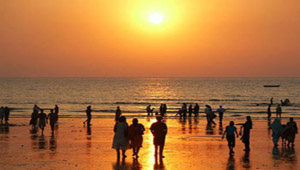 Chowpatty is Mumbai's most famous beach. During the day, it is the hangout of the happily unemployed who snooze under the shade of its miniature trees. But in the evening the atmosphere is more like a carnival: kids screaming on Ferris wheels or taking pony rides, wayside astrologers making a quick buck, monkey shows, and even the odd self -styled gymnast who will demonstrate amazing yogic postures for a small fee. At one closing stages is a row of bhelpuri shops hawking Mumbai's most popular snack: crisp puffed rice and semolina doused in pungent chutneys, all scooped up with a flat, fried puri. You might even catch a film shoot or a street play. In short, for most tourists Chowpatty is where the action is. Chowpatty is Mumbai's most famous beach. During the day, it is the hangout of the happily unemployed who snooze under the shade of its miniature trees. But in the evening the atmosphere is more like a carnival: kids screaming on Ferris wheels or taking pony rides, wayside astrologers making a quick buck, monkey shows, and even the odd self -styled gymnast who will demonstrate amazing yogic postures for a small fee. At one closing stages is a row of bhelpuri shops hawking Mumbai's most popular snack: crisp puffed rice and semolina doused in pungent chutneys, all scooped up with a flat, fried puri. You might even catch a film shoot or a street play. In short, for most tourists Chowpatty is where the action is. |
|
Kamla Nehru Park |
Top^ |
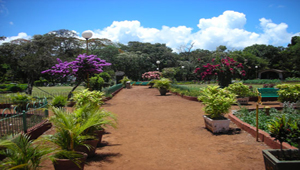 Kamla Nehru Park is among Mumbai's best hunt for entertainment and greatly popular amongst the kids. Perched at the top of picturesque Malabar Hill, Kamala Nehru Amusement Park covers an area of 3,300 sqmts.
Its name owes to Kamala Nehru, the wife of India's first Prime Minister Jawaharlal Nehru. With greenery all around and well-maintained and manicured garden, the Kamala Nehru Park is the place where you could chill out with your dear ones in perfect peace. Being at height the park is cool and less humid, quite comforting in comparison to rest of Mumbai.
The Kamala Nehru Park also has a queer structure sculpted like a shoe, which is said to have been inspired by the nursery rhyme - "There was an old woman". If you look down from the park, you can savor one of the most beautiful and panoramic views of the city down below, including the sweeping Chowpatty Beach and the glittering Marine Drive that looks like sparkling Queen's Necklace. Kamla Nehru Park is among Mumbai's best hunt for entertainment and greatly popular amongst the kids. Perched at the top of picturesque Malabar Hill, Kamala Nehru Amusement Park covers an area of 3,300 sqmts.
Its name owes to Kamala Nehru, the wife of India's first Prime Minister Jawaharlal Nehru. With greenery all around and well-maintained and manicured garden, the Kamala Nehru Park is the place where you could chill out with your dear ones in perfect peace. Being at height the park is cool and less humid, quite comforting in comparison to rest of Mumbai.
The Kamala Nehru Park also has a queer structure sculpted like a shoe, which is said to have been inspired by the nursery rhyme - "There was an old woman". If you look down from the park, you can savor one of the most beautiful and panoramic views of the city down below, including the sweeping Chowpatty Beach and the glittering Marine Drive that looks like sparkling Queen's Necklace. |
|
HANGING GARDENS |
Top^ |
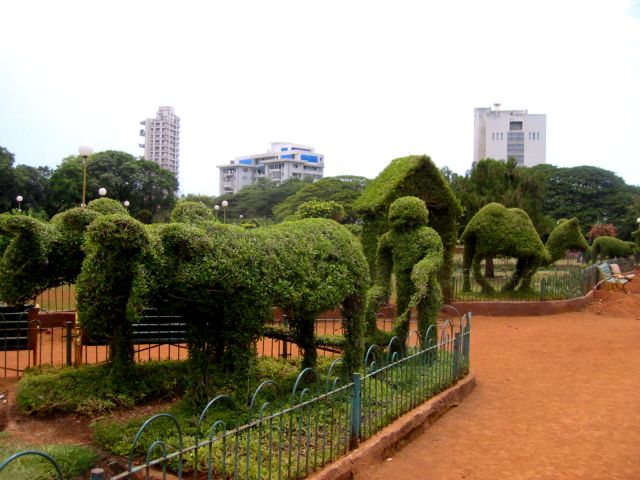 Hanging Gardens also known as Ferozeshah Mehta Gardens are the perfectly manicured terraced gardens on the slopes of the Malabar Hill, just opposite the Kamala Nehru Park.
Providing a calming view of Sunset over the Arabian Sea, the Hanging Gardens have been carved into the shapes of animals. The park, which was laid out in 1881 over Bombay's main reservoir, owes its name to the renowned barrister Pherozshah Mehta.
You can be a part of healthy stroll down the Hanging garden early in the morning and in the evening and rejuvenate your energy level amidst the soft caressing breeze that blow from the Arabian Sea. With gaping vibrancy of natural beauty there is a modern expanse of the city down hills. You have a panoramic view of sweeping Chowpatty Beach and scintillating Marine Drive from the Ferozeshah Mehta Ggarden that has no less than an awe-inspiring expression from the onlookers. Hanging Gardens also known as Ferozeshah Mehta Gardens are the perfectly manicured terraced gardens on the slopes of the Malabar Hill, just opposite the Kamala Nehru Park.
Providing a calming view of Sunset over the Arabian Sea, the Hanging Gardens have been carved into the shapes of animals. The park, which was laid out in 1881 over Bombay's main reservoir, owes its name to the renowned barrister Pherozshah Mehta.
You can be a part of healthy stroll down the Hanging garden early in the morning and in the evening and rejuvenate your energy level amidst the soft caressing breeze that blow from the Arabian Sea. With gaping vibrancy of natural beauty there is a modern expanse of the city down hills. You have a panoramic view of sweeping Chowpatty Beach and scintillating Marine Drive from the Ferozeshah Mehta Ggarden that has no less than an awe-inspiring expression from the onlookers. |
|
MALABAR HILL |
Top^ |
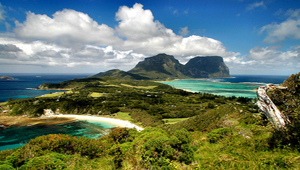 Malabar Hill is a small hill in South Mumbai that is quarters to the famous Hanging Gardens, Walkeshwar Temple and Kamala Nehru Gardens of the Dream City of India. In fact, it is the highest point in the city center, with a height of 50 meters, presenting an eye-catching view of the county that sprawls at the foothills. The region nearby is known as Malabar Hill and it is counted amongst the elite residential areas of Bombay.
Not only many business tycoons and film celebrities, this area also addresses the official residences of the Governor and the Chief Minister of Maharashtra. Real Estate value here is amongst the priciest in the world. Possibly, unobstructed sight of Back Bay along with Chowpatti beach in the forefront and Nariman Point skyline in the backdrop make the grounds for the soaring prices in this area. Jain Temple and Parsi Tower of Silence are two other religious structures in the region.
In the early days of city's growth, Mumbai was inundated by pirates from the Malabar Coast (Kerala), apart from others. With the intention of defending the city, a sentinel was built on the hill that offered the best view of the sea approaches at that time. And consequently, the hill came to be known as Malabar Hill. Amidst such great tourist attractions and hard sell popularity, Malabar Hill is certainly a place to be visited in Mumbai. Malabar Hill is a small hill in South Mumbai that is quarters to the famous Hanging Gardens, Walkeshwar Temple and Kamala Nehru Gardens of the Dream City of India. In fact, it is the highest point in the city center, with a height of 50 meters, presenting an eye-catching view of the county that sprawls at the foothills. The region nearby is known as Malabar Hill and it is counted amongst the elite residential areas of Bombay.
Not only many business tycoons and film celebrities, this area also addresses the official residences of the Governor and the Chief Minister of Maharashtra. Real Estate value here is amongst the priciest in the world. Possibly, unobstructed sight of Back Bay along with Chowpatti beach in the forefront and Nariman Point skyline in the backdrop make the grounds for the soaring prices in this area. Jain Temple and Parsi Tower of Silence are two other religious structures in the region.
In the early days of city's growth, Mumbai was inundated by pirates from the Malabar Coast (Kerala), apart from others. With the intention of defending the city, a sentinel was built on the hill that offered the best view of the sea approaches at that time. And consequently, the hill came to be known as Malabar Hill. Amidst such great tourist attractions and hard sell popularity, Malabar Hill is certainly a place to be visited in Mumbai. |
|
Prince of Wales Museum |
Top^ |
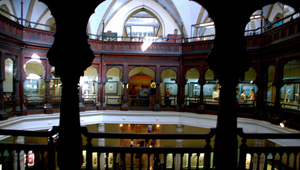 Prince of Wales Museum is the erstwhile name of Chhatrapati Shivaji Maharaj Vastu Sangrahalaya of Mumbai. In 1905, its foundation stone was laid down, by George V - the Prince of Wales himself, who came on a visit to India. The splendid structure was designed by George Wittet, an architect. The construction work was concluded in 1914, but the structure was converted to a military hospital for the period of World War I. The full-fledged museum was inaugurated by Lady Lloyd in 1923.
Located at M.G. Road, near Gateway of India, in South Bombay, Chhatrapati Shivaji Maharaj Museum has Indo-Saracenic style of architecture. Its façade is made of yellow and blue stones, mined from the Bombay region. It has an assortment of details from different Indian styles like small spherical cupolas on towers, saracenic arches with Muslim jalis as fillers, semi-open verandahs and jharokhas (windows) of Rajputs. Its dome has been designed deliberately, so as to append variety in the skyline and make a landmark at ground level.
Art, Archaeology and Natural History are three exclusive sections in the museum. It houses some of finest collections, ranging from ancient Indus Valley relics to the artifacts from the Gupta and Maurya Periods. Here, one can see a few of the rarest and earliest exhibits of Indian history. There are scores of interesting artifacts from foreign countries like Tibet and Nepal. It has one complete gallery comprising the exquisite tankha scrolls of the Buddhists.
Another gallery is devoted to bronze castings and sculptures. In case intricate paintings happen to be your interest, you will be delighted to see the compilation of more than 2,000 miniature paintings from the different art schools of India. The variety of art displayed in the museum is definitely a treat for any art-lover. In concise terms, Chhatrapati Shivaji Maharaj Museum is an important cultural and education centre that certainly deserves a visit. Prince of Wales Museum is the erstwhile name of Chhatrapati Shivaji Maharaj Vastu Sangrahalaya of Mumbai. In 1905, its foundation stone was laid down, by George V - the Prince of Wales himself, who came on a visit to India. The splendid structure was designed by George Wittet, an architect. The construction work was concluded in 1914, but the structure was converted to a military hospital for the period of World War I. The full-fledged museum was inaugurated by Lady Lloyd in 1923.
Located at M.G. Road, near Gateway of India, in South Bombay, Chhatrapati Shivaji Maharaj Museum has Indo-Saracenic style of architecture. Its façade is made of yellow and blue stones, mined from the Bombay region. It has an assortment of details from different Indian styles like small spherical cupolas on towers, saracenic arches with Muslim jalis as fillers, semi-open verandahs and jharokhas (windows) of Rajputs. Its dome has been designed deliberately, so as to append variety in the skyline and make a landmark at ground level.
Art, Archaeology and Natural History are three exclusive sections in the museum. It houses some of finest collections, ranging from ancient Indus Valley relics to the artifacts from the Gupta and Maurya Periods. Here, one can see a few of the rarest and earliest exhibits of Indian history. There are scores of interesting artifacts from foreign countries like Tibet and Nepal. It has one complete gallery comprising the exquisite tankha scrolls of the Buddhists.
Another gallery is devoted to bronze castings and sculptures. In case intricate paintings happen to be your interest, you will be delighted to see the compilation of more than 2,000 miniature paintings from the different art schools of India. The variety of art displayed in the museum is definitely a treat for any art-lover. In concise terms, Chhatrapati Shivaji Maharaj Museum is an important cultural and education centre that certainly deserves a visit. |
|
MANI BHAvAN |
Top^ |
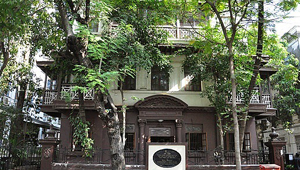 Mani Bhavan is a veritable memoir of Mahatma Gandhi, the Father of the Nation. It is located at Laburnam Road in Mumbai, near Nana Chowk of Gamdevi. Also known as Gandhi Museum, Mani Bhavan served as the residence of the great freedom fighter of India between 1917 and 1934. Infact, Mahatma Gandhi started various struggle movements like Non-Cooperation, Satyagraha, Swadeshi, Khadi and Khilafat while residing here.
Gandhi Museum is certainly a tribute to the torchbearer of non-violence, Mahatma Gandhi. This mansion was actually owned by Revashankar Jagjeevan Jhaveri and before him, by the Mani family, who were friends and host of Gandhi during his stay at Mumbai. In the year 1955, the building came under the administration of the Gandhi Smarak Nidhi and ever since, Mani Bhawan is exhibiting the chronicles of the legend.
It is a two-storied structure, which has a reference library with over 20,000 books and a photo display of the Gandhi's life. The old charkha or spinning wheel that Gandhiji used to use is the major attraction in the well-preserved memorabilia. Mani Bhavan is closely associated with Gandhiji and his life, which he dedicated to get the nation liberated. It is a place worth-visiting and recalling the days that involved efforts of the freedom struggler. Mani Bhavan is a veritable memoir of Mahatma Gandhi, the Father of the Nation. It is located at Laburnam Road in Mumbai, near Nana Chowk of Gamdevi. Also known as Gandhi Museum, Mani Bhavan served as the residence of the great freedom fighter of India between 1917 and 1934. Infact, Mahatma Gandhi started various struggle movements like Non-Cooperation, Satyagraha, Swadeshi, Khadi and Khilafat while residing here.
Gandhi Museum is certainly a tribute to the torchbearer of non-violence, Mahatma Gandhi. This mansion was actually owned by Revashankar Jagjeevan Jhaveri and before him, by the Mani family, who were friends and host of Gandhi during his stay at Mumbai. In the year 1955, the building came under the administration of the Gandhi Smarak Nidhi and ever since, Mani Bhawan is exhibiting the chronicles of the legend.
It is a two-storied structure, which has a reference library with over 20,000 books and a photo display of the Gandhi's life. The old charkha or spinning wheel that Gandhiji used to use is the major attraction in the well-preserved memorabilia. Mani Bhavan is closely associated with Gandhiji and his life, which he dedicated to get the nation liberated. It is a place worth-visiting and recalling the days that involved efforts of the freedom struggler. |
|
Tower of Silence |
Top^ |
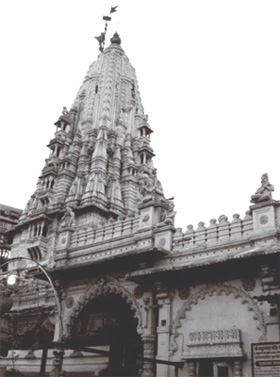 The Towers of Silence in Mumbai serve as the symbol of religious belief held by the depleting population of Paris. It is a unique structure devoted to the final rites of the dead. It also serves as a tourist attraction, but most important of all, the structure is a symbol of Mumbai's diversity and a proof of its secular character. The Towers of Silence in Mumbai serve as the symbol of religious belief held by the depleting population of Paris. It is a unique structure devoted to the final rites of the dead. It also serves as a tourist attraction, but most important of all, the structure is a symbol of Mumbai's diversity and a proof of its secular character. The tower of Silence therefore continues to attract attention and respect from countless number of people from all over India and abroad. This Tower is a huge circular structure similar to a well and it is a custom amongst Parsee community that after death, the bodies of the Parsee people are sent to this Tower where they are consumed by birds like the eagles and vultures. The reason for doing so is that the Parsees believe that the dead body should not pollute the air, water or soil by means of cremation and hence such a place is created, which is also called as 'dakhma' or 'dokhma.' In the 9th century, the Parsi community from Iran came to Mumbai and constructed this structure which consisted of 3 rings out of which first was for male bodies, the second for female bodies and the last one for children. |
|
Versova Beach |
Top^ |
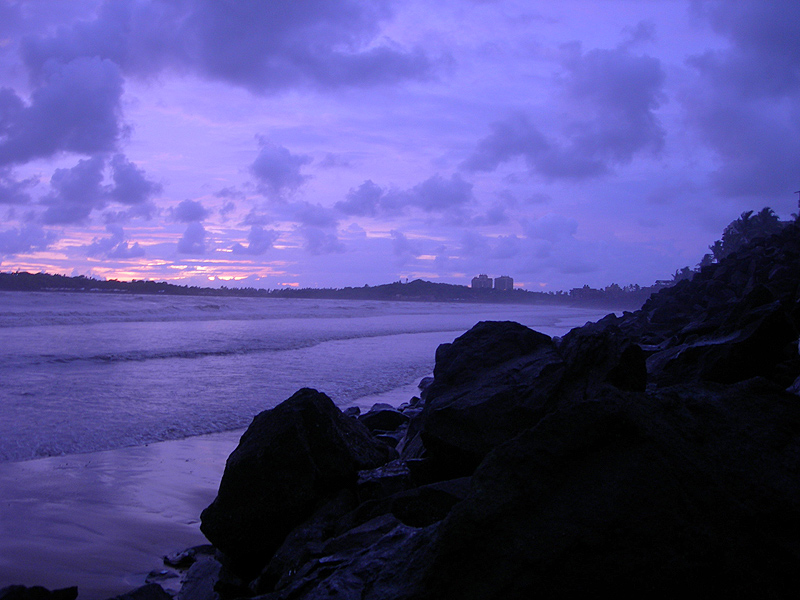 Located towards the north of Juhu, Versova Beach is among the other attractive beaches in Mumbai. It is a home to Mumbai's largest Koli fishing community. You may plan a trip to Versova Beach at practically anytime, however we advice you to make a trip between September and May, when the humidity is low and the cool see breeze gives a pleasant respite from the general heat and grime of the city life. Located towards the north of Juhu, Versova Beach is among the other attractive beaches in Mumbai. It is a home to Mumbai's largest Koli fishing community. You may plan a trip to Versova Beach at practically anytime, however we advice you to make a trip between September and May, when the humidity is low and the cool see breeze gives a pleasant respite from the general heat and grime of the city life. |
|
Marve Beach |
Top^ |
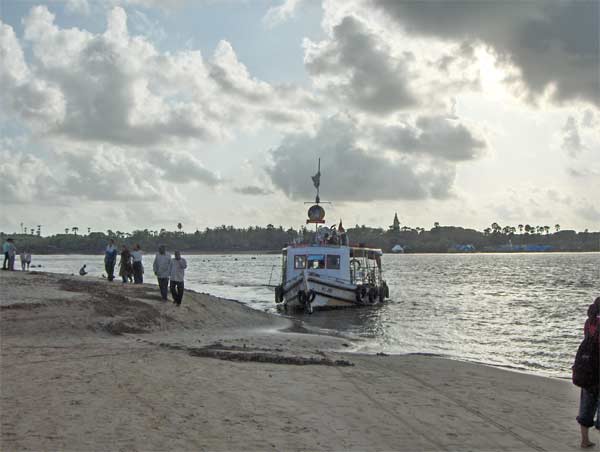 Drive 19 miles from the din of the Mumbai city and find yourself amidst the beautiful Marve beache. These attractive beache are pleasant for bathing. You can enjoy the Sun and the Sea amidst complete silence except the music of surging waves that you would love to explore. Marve beache are dotted with some of the finely managed exotic private cottages built on the backdrop of the vast Arabian Sea and gaping Sun, that make these beache all the more a tempting site to visit. Drive 19 miles from the din of the Mumbai city and find yourself amidst the beautiful Marve beache. These attractive beache are pleasant for bathing. You can enjoy the Sun and the Sea amidst complete silence except the music of surging waves that you would love to explore. Marve beache are dotted with some of the finely managed exotic private cottages built on the backdrop of the vast Arabian Sea and gaping Sun, that make these beache all the more a tempting site to visit. |
|
Gorai Beach |
Top^ |
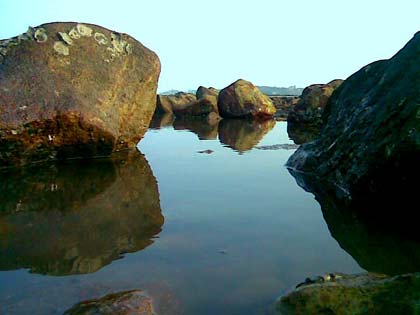 Gorai Beach is another rustic place to be in Mumbai. It is adjacent to the Manori Beach. The Gorai creek barge looks like a jalopy but is sturdy and serviceable. Gorai is a very safe and excellent beach in Mumbai suburbs. A small creek links this beach and it is possible to reach this beach from the mainland of Mumbai crossing the creek. The creek looks very weak and gives an appearance of breaking down. However, this creek is sturdy and serviceable. Accommodation is very easy. There are several hotels where you can stay for few days and enjoy at the beautiful beach. This beach has long wide coast with sun baked sand shore. Gorai Beach is another rustic place to be in Mumbai. It is adjacent to the Manori Beach. The Gorai creek barge looks like a jalopy but is sturdy and serviceable. Gorai is a very safe and excellent beach in Mumbai suburbs. A small creek links this beach and it is possible to reach this beach from the mainland of Mumbai crossing the creek. The creek looks very weak and gives an appearance of breaking down. However, this creek is sturdy and serviceable. Accommodation is very easy. There are several hotels where you can stay for few days and enjoy at the beautiful beach. This beach has long wide coast with sun baked sand shore. |
|
Madh Island |
Top^ |
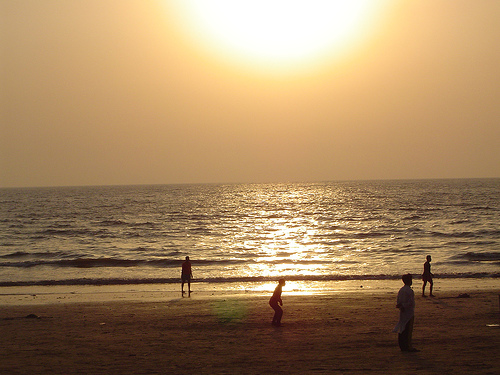 Madh Island in Mumbai is a peninsula. It might have been an island earlier. The area is bounded by the Arabian Sea to the west, and the Malad creek to the south. You can access the area through a bus service from Malad or a ferry service through Versova. Madh Island in Mumbai is a peninsula. It might have been an island earlier. The area is bounded by the Arabian Sea to the west, and the Malad creek to the south. You can access the area through a bus service from Malad or a ferry service through Versova.It is considered a quick, peaceful and inexpensive getaway from the maddening crowds of the city. Madh Island was once a separate island but with the growth of Mumbai city, it is considered a suburb today. There are a number of resorts and bungalows, and spots for picnics. Beaches in Mumbai are the most exciting tourists' destinations in Mumbai. Have fun on the sands bordering the Arabian Sea! |
|
Manori beach |
Top^ |
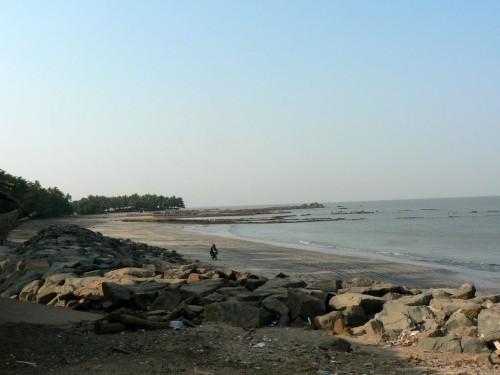 One of the sole and lonely beach during weekdays, Manori beach is a small island location at Mumbai suburb as one can find no more than couple of love partners and dogs at beach during days. Breath of fresh air, serene atmosphere, ignorance to all your worries - such is the virtue of Manori beach located in fishing village of Manori. Your desire to bathe in clean and pleasant, yet playful waters of the sea can be fulfilled here. If this were not enough night beach parties are frequent in Manori beach. People fatigued with routine lives loosen their nerves and let their hair down! Ferry rides from Marve beach can take you to Manori in 15 minutes. You will find Manori beach more crowded than Marve beaches. One of the sole and lonely beach during weekdays, Manori beach is a small island location at Mumbai suburb as one can find no more than couple of love partners and dogs at beach during days. Breath of fresh air, serene atmosphere, ignorance to all your worries - such is the virtue of Manori beach located in fishing village of Manori. Your desire to bathe in clean and pleasant, yet playful waters of the sea can be fulfilled here. If this were not enough night beach parties are frequent in Manori beach. People fatigued with routine lives loosen their nerves and let their hair down! Ferry rides from Marve beach can take you to Manori in 15 minutes. You will find Manori beach more crowded than Marve beaches. |
|
Aksa beach |
Top^ |
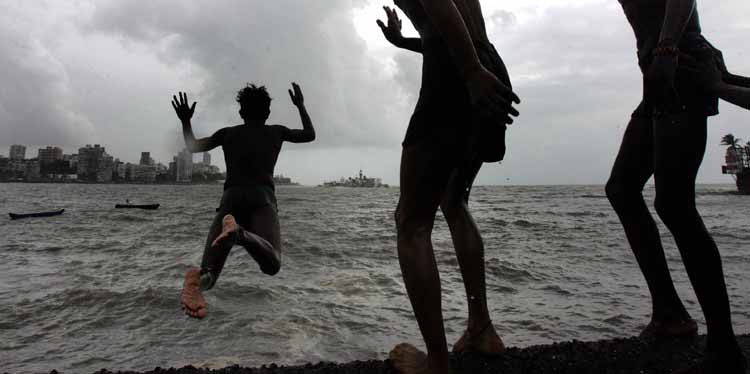 Aksa is a polular beach near Malad in Mumbai's Western Suburbs. On sunsays and holidays the beach can become very crowded and noisy but on other days it is a silent, clean and beautiful beach unlike any other in the crowded metropolis. This beach is next to a village called Madh. As Mumbai grew around this village it now mainly consists of a bunch of slum houses and a few small brick apartments, but along this village one can get to the Madh Fort, thoug that is usually closed for public. However there is a small path leading to a Shiva Temple from where we can get really close to the Fort from behind. Aksa is a polular beach near Malad in Mumbai's Western Suburbs. On sunsays and holidays the beach can become very crowded and noisy but on other days it is a silent, clean and beautiful beach unlike any other in the crowded metropolis. This beach is next to a village called Madh. As Mumbai grew around this village it now mainly consists of a bunch of slum houses and a few small brick apartments, but along this village one can get to the Madh Fort, thoug that is usually closed for public. However there is a small path leading to a Shiva Temple from where we can get really close to the Fort from behind. |
|
The Kanheri Caves |
Top^ |
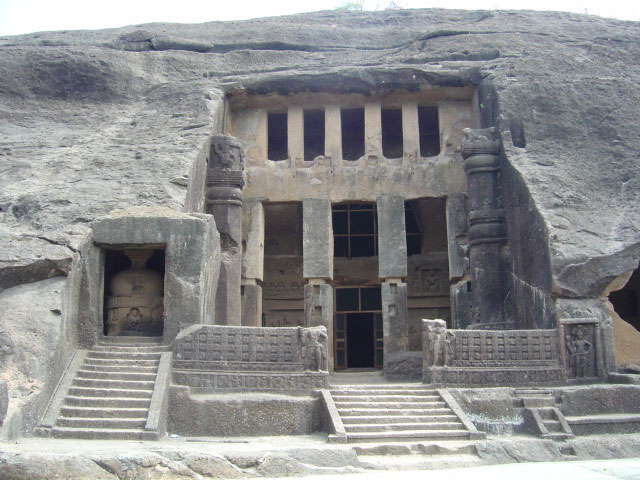 Kanheri Caves are rock cut caves situated in middle of lush green forest of Borivali National Park in the heart of Mumbai, India. The path from National Park gate to Kanheri caves is a nice weekend getaway into nature in the heart of Mumbai. In rainy season it's a famous picnic place.
These are Buddhist caves or monasteries where monks practiced their austerities around the first century AD. And unlike the artistic extravagance of Elephanta, they are Spartan and bare. Situated in the heart of Mumbai's National Park, the complex contains more than a hundred tiny cells cut into the flank of a hill, each fitted with a stone plinth that evidently served as a bed. There is also a congregation hall supported by huge stone pillars that contains the dagoba, a kind of Buddhist shrine. And if you pick your way up the hill you will find channels and cisterns that are remnants of an ancient water system that channeled rainwater into huge urns. In fact, Kanheri is probably the only clue to the rise and fall of Buddhism in Western India. Kanheri Caves are rock cut caves situated in middle of lush green forest of Borivali National Park in the heart of Mumbai, India. The path from National Park gate to Kanheri caves is a nice weekend getaway into nature in the heart of Mumbai. In rainy season it's a famous picnic place.
These are Buddhist caves or monasteries where monks practiced their austerities around the first century AD. And unlike the artistic extravagance of Elephanta, they are Spartan and bare. Situated in the heart of Mumbai's National Park, the complex contains more than a hundred tiny cells cut into the flank of a hill, each fitted with a stone plinth that evidently served as a bed. There is also a congregation hall supported by huge stone pillars that contains the dagoba, a kind of Buddhist shrine. And if you pick your way up the hill you will find channels and cisterns that are remnants of an ancient water system that channeled rainwater into huge urns. In fact, Kanheri is probably the only clue to the rise and fall of Buddhism in Western India. |
|
Ajanta Ellora cave |
Top^ |
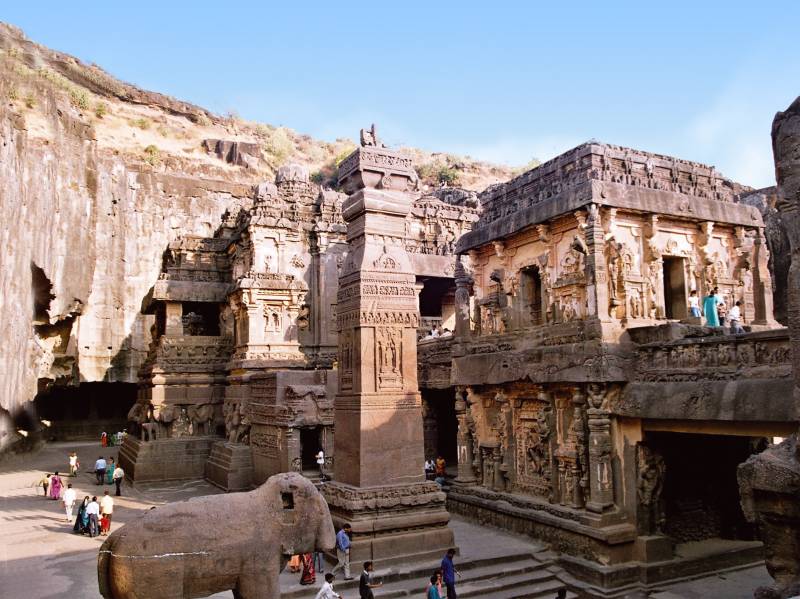 Ajanta and Ellora Caves are the ancient repository of Indian architectural heritage. Located near the city of Aurangabad in Maharashtra Ajanta and Ellora caves are the world famous for the cave shrines that cut out of rock, all by hand. There are 34 caves at Ellora and 29 caves at Ajanta. And all are sheer outstanding specimens of Indian architectural excellence. Ajanta and Ellora Caves are the ancient repository of Indian architectural heritage. Located near the city of Aurangabad in Maharashtra Ajanta and Ellora caves are the world famous for the cave shrines that cut out of rock, all by hand. There are 34 caves at Ellora and 29 caves at Ajanta. And all are sheer outstanding specimens of Indian architectural excellence.The intriguing Ajanta Caves are carved out of large rocks and are 30 in number. These caves are dedicated to Lord Buddha. The followers and students of Buddhism resided here to study this religion. They have decorated these caves with the help of their excellent architectural skills and artistic paintings. The carvings and the paintings in the caves depict the life stories of Lord Buddha. Along with this, several types of human and animal figures are also carved out of the rocks. ¤ Depiction of Contemporary Society ¤ The Caves ¤ The Viharas ¤ The Chaityas ¤ The Wall-Paintings |
|
Aurangabad caves |
Top^ |
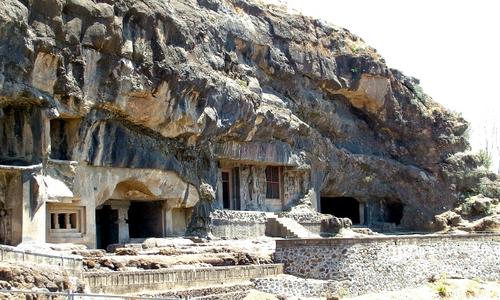 Cave number 6 showcases women with some exotic hairstyles and ornamentation and one can notice that these sculptures are still undamaged after so many years. Aurangabad has its own group of caves 2 km north of the Bibi-ka-Maqbara. They were carved out of the hillside around the 6th or 7th century AD. The 10 caves are all Buddhist. All the caves in the Western group are called Viharas. Situated just on the fringes of Aurangabad are the caves that were carved out during the 2nd to 6th century in Maharashtra. These caves are ten in number and have been shaped out of somewhat soft rock. Tantric Hinduism has been the inspiration of their architecture and iconography. Aurangabad Caves are to be found at two different locations, at a distance of a kilometer. These two locations are referred to as Western Group Caves (Cave 1-5) and Eastern Group Caves (cave 6-10). A huge Buddha figure and an idol of Ganesh are preserved in this cave. Cave number 7 is regarded to be the most interesting as it has the figures of women scantily clad and ornately bejeweled are indicative of the rise of tantric Buddhism during this period. Cave number 6 showcases women with some exotic hairstyles and ornamentation and one can notice that these sculptures are still undamaged after so many years. Aurangabad has its own group of caves 2 km north of the Bibi-ka-Maqbara. They were carved out of the hillside around the 6th or 7th century AD. The 10 caves are all Buddhist. All the caves in the Western group are called Viharas. Situated just on the fringes of Aurangabad are the caves that were carved out during the 2nd to 6th century in Maharashtra. These caves are ten in number and have been shaped out of somewhat soft rock. Tantric Hinduism has been the inspiration of their architecture and iconography. Aurangabad Caves are to be found at two different locations, at a distance of a kilometer. These two locations are referred to as Western Group Caves (Cave 1-5) and Eastern Group Caves (cave 6-10). A huge Buddha figure and an idol of Ganesh are preserved in this cave. Cave number 7 is regarded to be the most interesting as it has the figures of women scantily clad and ornately bejeweled are indicative of the rise of tantric Buddhism during this period. |
|
Elephanta caves |
Top^ |
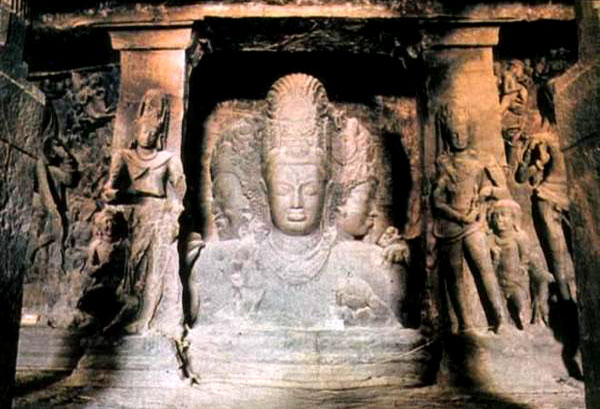 This place resonates with the spiritual energy of India. The Elephanta Caves are a great tourist attraction in the vicinity of the large Mumbai metropolis. The Elephanta Island is located 10 km away from the Gateway of India at Mumbai. These caves house rock cut temples dating back to the 5th century CE. The Elephanta Island was so named by the Portuguese, after the statue of an elephant near the landing area of the island. These rock cut temples dedicated to Shiva Mahadeva are rich in sculptural content. Motorboats take passengers from Apollo Bunder near the Gateway of India. This place resonates with the spiritual energy of India. The Elephanta Caves are a great tourist attraction in the vicinity of the large Mumbai metropolis. The Elephanta Island is located 10 km away from the Gateway of India at Mumbai. These caves house rock cut temples dating back to the 5th century CE. The Elephanta Island was so named by the Portuguese, after the statue of an elephant near the landing area of the island. These rock cut temples dedicated to Shiva Mahadeva are rich in sculptural content. Motorboats take passengers from Apollo Bunder near the Gateway of India. The cave complex is a collection of shrines, courtyards, inner cells, grand halls and porticos arranged in the splendid symmetry of Indian rock-cut architecture, and filled with exquisite stone sculptures of Hindu Gods and Goddesses. It is situated on Gharapuri Island in Mumbai's harbour, about an hour's boat ride from the Gateway Of India. At the entrance to the caves is the famous Trimurti, the celebrated trinity of Elephanta : there's Lord Brahma the Creator, Lord Vishnu, the preserver and Lord Shiva the Destroyer Unfortunately, many of the sculptures inside have been damaged by iconoclastic Portuguese rulers who took potshots at Hindu Gods with their rifles. And yet somehow, nothing has disturbed the sublime beauty of this place for centuries. |
|
Lonavala |
Top^ |
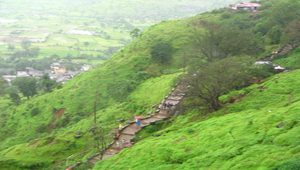 Lonavala is located midway between Mumbai and Pune the two big cities of Maharashtra State. Lonavala is famous for its hills and valleys and you can see many water falls during rainy seasons or in monsoon time. Lonavala has become famous because of nature's gift. Lonavala has been blessed with valleys, hills, Milky Waterfalls, Lush Greenery and pleasant cool winds. This region full of natural beauty. Words are not enough to describe the beauty for this place. Lonavala is an epic poem created by God. Beautiful mountain ranges trying to reach the sky are sites that please the human mind and give an experience of heavenly pleasure. The morning sun rising over here appears as if it is sprinkling rose water all over. Chirping birds gently awaken one and all of this makes it a really Good Morning. The whole place is covered with a thick blanket of fog early in the morning; this is how the day begins here. Lonavala is located midway between Mumbai and Pune the two big cities of Maharashtra State. Lonavala is famous for its hills and valleys and you can see many water falls during rainy seasons or in monsoon time. Lonavala has become famous because of nature's gift. Lonavala has been blessed with valleys, hills, Milky Waterfalls, Lush Greenery and pleasant cool winds. This region full of natural beauty. Words are not enough to describe the beauty for this place. Lonavala is an epic poem created by God. Beautiful mountain ranges trying to reach the sky are sites that please the human mind and give an experience of heavenly pleasure. The morning sun rising over here appears as if it is sprinkling rose water all over. Chirping birds gently awaken one and all of this makes it a really Good Morning. The whole place is covered with a thick blanket of fog early in the morning; this is how the day begins here. |
|
Shirdi |
Top^ |
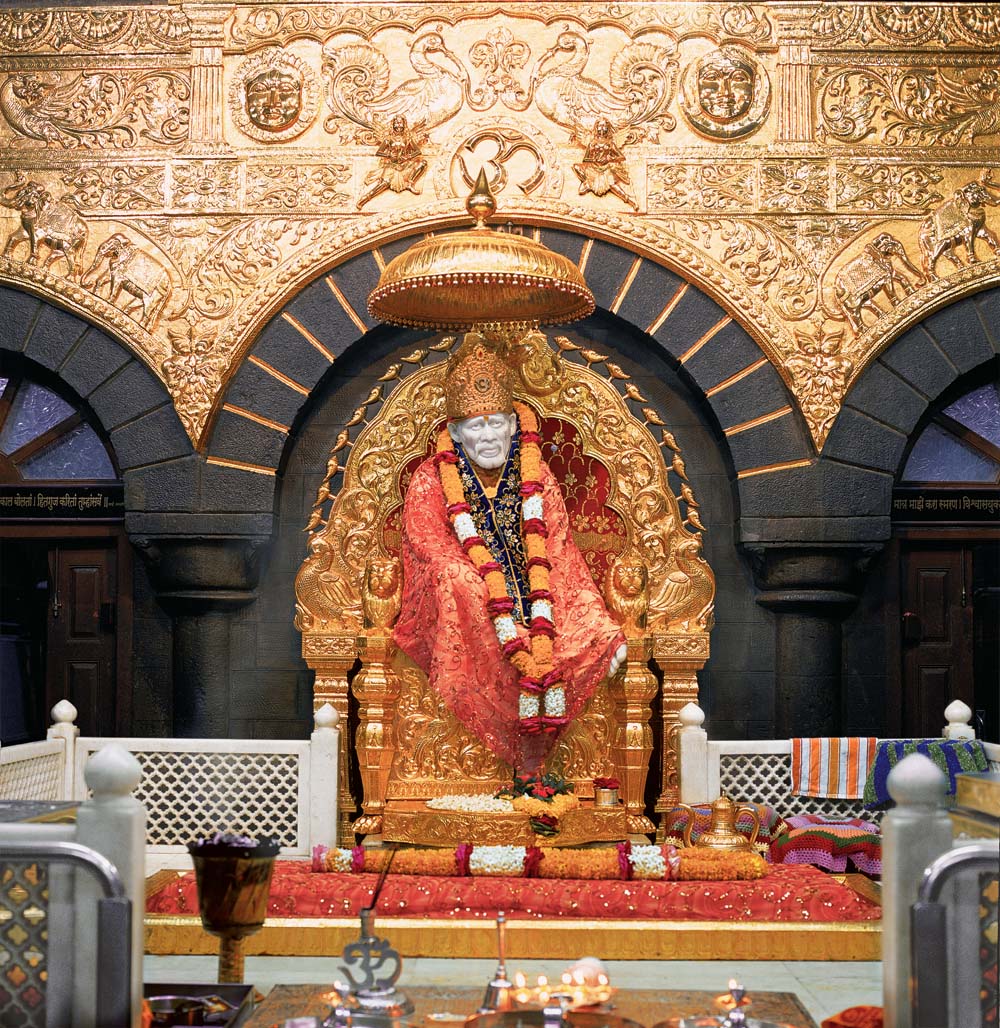 Every activity at Shirdi revolves around the vast temple complex enthusiastic to Sai Baba. Devotees start queuing up in the early hours of dawn to catch a sight and seek the blessings of the life-size statue of Sai Baba. Thursday is marked by special pujas and darshan of the Sai Baba statue. There are other places of attention that devotees can visit as well including Dwarkamani Mosque where the Baba meditated and slept on alternate nights. Near the mosque, in a corridor is the dhuni or everlasting flame that burns day and night. Other places of importance are the Gurusthan, the Kandoba Temple, Shani Mandir, Narsimha Mandir, Changdev Maharaj Samadhi and the Sakori Ashram. Every activity at Shirdi revolves around the vast temple complex enthusiastic to Sai Baba. Devotees start queuing up in the early hours of dawn to catch a sight and seek the blessings of the life-size statue of Sai Baba. Thursday is marked by special pujas and darshan of the Sai Baba statue. There are other places of attention that devotees can visit as well including Dwarkamani Mosque where the Baba meditated and slept on alternate nights. Near the mosque, in a corridor is the dhuni or everlasting flame that burns day and night. Other places of importance are the Gurusthan, the Kandoba Temple, Shani Mandir, Narsimha Mandir, Changdev Maharaj Samadhi and the Sakori Ashram. |
|